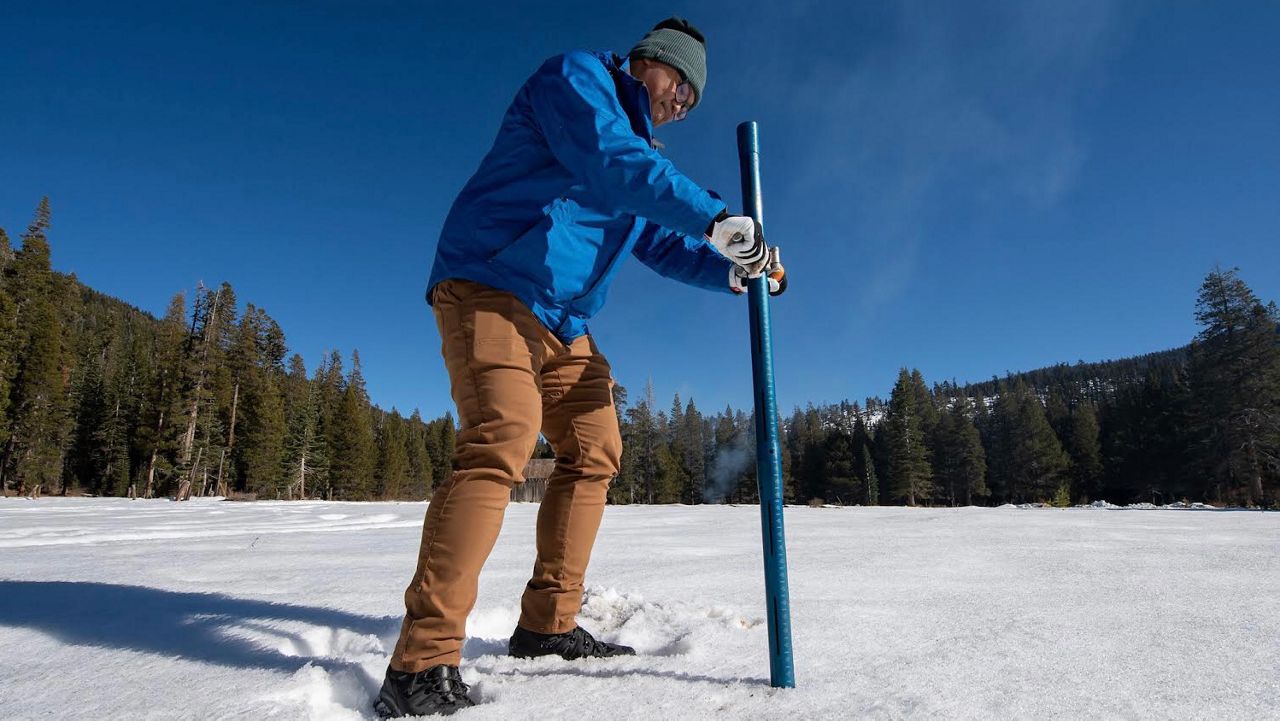SOUTH LAKE TAHOE, Calif. — The snowpack is 93% of average to date, according to the first snow survey of the season conducted by the California Department of Water Resources.
Completed Wednesday at Phillips Station in South Lake Tahoe, the measurement is one of more than 260 snow courses in the Sierra Nevada region the department measures each winter and early spring to determine how much water will melt and run off to state reservoirs in the warmer months.
“Today’s survey is a little higher than what we’ve been seeing based on automated snow measurement based on 130 sensors statewide,” said Sean de Guzman, chief of snow surveys and water supply forecasting for the Department of Water Resources, during a Facebook Live webcast from the mountain Wednesday morning. Those automated sensors are reporting 52% of average.
The snow’s water content, or the amount of liquid water contained in the snow if it were to melt, “is the critical number we’re looking for as water managers,” he added. Wednesday's measurement showed a snow depth of 30.5 inches and a snow water content of 10.5 inches.
The department uses that data to predict the spring and summer runoff that determines its water supply forecast for the coming year. About one-third of the state’s water supply comes from snowpack runoff.
This year's fall season was extremely dry in the Sierra Nevadas with one of the driest October-to-November periods on record, de Guzman explained. “The extremely dry fall has only exacerbated what’s been an unprecedented wildfire season.”
This year’s Creek Fire in the San Joaquin River Watershed and the Complex Fire in Northern California will impact the snowpack, he added. They could alter snow retention due to the loss of tree canopy and also increase snowmelt and percolation rates due to severely burned soils.
“While a dry December is not ideal, the other two-thirds of our historically wettest months still remain in January and February,” he said, noting that the latest weather models indicate a wet early January. “It’s not uncommon for the bulk of the Sierra snowpack to come from a handful of winter storms.”
De Guzman also stressed that, following last year’s below-average precipitation and snow, “it remains critical that all Californians continue to make water conservation a way of life.”



